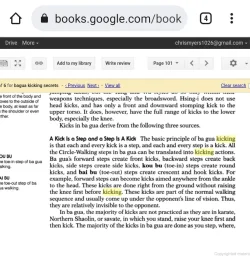In the canonical Wong Fei Hung lineage, the shadowless kick (from the rabid dog street legend) is like you said, but it's also not just a kick, it's a smash between fist and foot.
I forgot to point out that this image should be viewed right to left, the Crescent Moon Hand and Foot is the setup to the kick (and it's taught straight like you said, like a shovel kick, in the Tiger Crane Paired Fist but very important to consider: pretty much any type of front kick works just as well. Drill 8-12 different front types, push heel, instep, whatever, and there's no reason you can't substitute them. The actual important part is left arm, raised in the right image as the feint that smashes down on the head, while the right leg kicks.
View attachment 28042
Any time. Here's another "fancy" kick setup by southern standards, pretty common right leg side kick from Crane/Dragon/Unicorn stepping transition (depending on who you ask). Again, just one image but there are a few ways I can remember to pull this off, including a teep, a heel push, and even leaping kick and flying knee version.
View attachment 28043
It's unfortunate that so many choose to pick up Wing Chun, but stop there. If I had stopped at Hung Ga Kuen, I would never have picked up the Chuka Shaolin Phoenix Eye Fist, which is probably one of the most useful techniques I've ever come across. Yet another technique image from the southern Tiger Crane that doesn't come close to describing all the different Crane technique ways the index finger can be used to dig into the opponent. If you have a little brother you you want to torture, this is all the technique you need. Also in Wing Chun somewhere, as well as Japanese art where it's called
ippon ken, the "One Fist"
View attachment 28044

